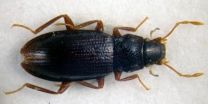(Press-News.org) A cell phone-sized, wireless near-infrared device is as reliable as the current "gold standard" invasive tests in determining bladder disease, according to a study by researchers at the University of British Columbia, Vancouver Coastal Health and the Child & Family Research Institute (CFRI).
The new physiologic information gathered through near-infrared spectroscopy (NIRS) could also advance treatment that tackles the root causes of urinary incontinence, says the research team.
Published in the current issue of the International Journal of Spectroscopy, the study is the first to use NIRS to investigate bladder disease in children.
In this study of 37 healthy and symptomatic adults and children, a wireless NIRS device is placed on the skin over the bladder and held in place by a strap. Software measures the differences in the amount of light shone through the skin to – and returning from – the bladder wall. The data provides researchers with a measure of changing hemoglobin concentration and the levels of oxygen and volume in the blood.
The research team found consistent patterns of normal oxygen availability and blood supply in the bladder muscle of healthy subjects during urination. Meanwhile, the patterns in children with symptoms due to voiding problems were quite different and matched patterns seen when blood flow or oxygen supply is inadequate for normal muscle function.
"Currently, diagnosing bladder dysfunction usually requires an invasive test that involves urethral and rectal catheter insertion to measure bladder pressure and urine output – a stressful and painful procedure that provides a limited amount of physiologic information," says lead author Dr. Andrew Macnab, a pediatrics and urology professor at UBC and Head of the NIRS study group at the Bladder Care Centre at UBC Hospital.
"Our study shows that near-infrared spectroscopy – a non-toxic and non-invasive method using light shone through the skin to monitor the microcirculation of the bladder – can detect changes in bladder physiology that are proving characteristic for specific causes of voiding dysfunction" says Macnab, a senior scientist at CFRI.
A previous study led by Macnab demonstrated the accuracy of non-invasive NIRS in diagnosing men with difficulty passing urine due to possible prostatic enlargement compared to current invasive tests. Inclusion of children in the latest study further validates the merits of extending NIRS monitoring to children.
“Both adults and children like the device, and patients can be in a room remote from the researcher when they pass urine for the test, as the device can either store the data or transmit the results wirelessly to a computer in the next room. NIRS definitely constitutes a disruptive technology in the field of urology,” says co-author Dr. Lynn Stothers, a urology professor at UBC and director of research at the Bladder Care Centre at UBC Hospital.
“We found it particularly useful in studies involving children; its small size and ease of application generated no anxiety, didn’t limit the participants’ movement or their ability to empty their bladder; and NIRS definitely constitutes a disruptive technology in the field of urology,” says co-author Dr. Kourosh Afshar, an urologist at BC Children’s Hospital and an assistant professor at UBC.
Urinary incontinence is a stigmatized and under-treated condition and often erroneously regarded as a "normal" part of early childhood and aging or a symptom of many other diseases.
One third of men and women aged 30-70 experience loss of bladder control that negatively impacts their quality of life over one million patients seek physician consults for this every year in the U.S. alone. It also affects 53 per cent of all long-term-care residents, 25 per cent of middle-aged women and 15 per cent of all men 60 years and older.
"Current treatment options for incontinence focus on managing symptoms because little is known about the physiology of voiding dysfunction," says Macnab. "NIRS could help us determine whether blood flow in the bladder muscle is a root cause of incontinence and in turn develop new therapeutics to cure these conditions."
NIRS was originally used by a team of UBC and B.C. Children's Hospital scientists led by Macnab to develop a new way to monitor the adequacy of oxygen delivery to the brain during heart bypass surgery. A device capable of monitoring changes in oxygenation and blood flow in the bladder muscle was later developed and patented through UBC's Industry Liaison Office.
The team's most recent study using spectroscopy won the prize for best research in female urology at the recent American Urological Association annual meeting. Macnab says the research team is currently exploring the use of wireless NIRS to investigate bladder function in patients with spinal cord injury, and long-term monitoring as a way to improve the quality of life in patients with urinary incontinence due to a range of problems.
###
The study and a photo showing the placement of the NIRS device are available at http://www.hindawi.com/journals/ijs/2011/814179/
END
Although known for over a century, cryptosporidiosis was believed to be an extremely rare condition and it only gained attention with the discovery that it can affect humans, especially immune-compromised individuals. It is caused by a single-cell parasite, one of a family known as cryptosporidia. Some cryptosporidia also infect reptiles, where after a sometimes lengthy incubation period they cause gastrointestinal problems even in otherwise healthy individuals. The condition is usually persistent and is presently impossible to cure. It is therefore important to minimize ...
A prior fracture at least doubles a patient's future fracture risk – yet numerous studies from across the world have found that healthcare systems fail to respond to the first fracture to prevent future fractures. Professor Cyrus Cooper, chair of the Committee of Scientific Advisors of the International Osteoporosis Foundation (IOF) and director of the MRC Lifecourse Epidemiology Unit, University of Southampton in the UK stated, "Studies from the UK, USA and Australia have reported that 45% or more of today's hip fracture patients have a prior fracture history. Healthcare ...
Decorative white silk crosses are an ingenious tactic used by orb-weaving spiders to protect their webs from damage, a new study from the University of Melbourne has revealed.
The team, led by Dr Andre Walter and Professor Mark Elgar from the University of Melbourne's Department of Zoology, found that orb-weaving spiders respond to severe damage to their webs by building bigger silk crosses, but if the damage is mild they don't bother adding extra decoration.
Professor Mark Elgar said web damage is costly for spiders as a lot of nutritional resources are required to ...
A large number of illnesses stem from misfolded proteins, molecules composed of amino acids. Researchers at the University of Zurich have now studied protein misfolding using a special spectroscopic technique. Misfolding, as they report in Nature, is more frequent if the sequence of the amino acids in the neighboring protein domains is very similar.
Proteins are the main molecular machines in our bodies. They perform a wide range of functions, from digesting and processing nutrients, converting energy and aiding cell structure to transmitting signals in cells and the ...
The strength of sun cream recently recommended by the National Institute for Health and Clinical Excellence (NICE) to stave off sunburn is far too low and "not in the interests of public health," warns the Drug and Therapeutics Bulletin (DTB).
NICE should rethink its advice, and soon, it says.
NICE recommends sunscreens with a sun protection factor, or SPF, of 15 as sufficient to prevent sunburn and the subsequent potential risk of skin cancer.
But DTB says that this is based on standard test conditions in which manufacturers apply 2 mg/cm2 of product to the skin.
"In ...
Permanent hair dye gives the most serious adverse effects, yet there are also many reactions to facial and body moisturisers. This comes from the first report from the National Register of Adverse Effects from Cosmetic Products published by the Norwegian Institute of Public Health.
"The Register gives us a better overview of the products that cause adverse effects, the type of adverse effect and who experiences them. Then we can make an assessment and even warn against the use of certain products," says researcher Berit Granum at the Division of Environmental Medicine ...
Toronto – Not allowed to advertise your booze or smokes on a billboard?
That's okay. Research shows online advertising works especially well in places with government ad bans.
"If you want to regulate the offline world, you have to remember that people have access online too and you have to think about how that online world is going to mitigate the effects of your regulation," says Avi Goldfarb, a marketing professor at the University of Toronto's Rotman School of Management who co-wrote a study on the topic with Catherine Tucker of MIT's Sloan School of Management.
The ...
Boston, Mass. – Researchers at Children's Hospital Boston and Google.org have found web-based search data to be a viable source of information for early detection and monitoring of outbreaks of dengue, an emerging mosquito-borne virus found in tropical areas of the world. Because search data allows the capture of disease-related queries in near real time, it could help public health officials in the more than 100 countries affected by dengue respond more quickly to nascent epidemics.
A team from the Children's Hospital Informatics Program (CHIP), led by John Brownstein, ...
A European research team, with Spanish participation, has described two new beetle species measuring two millimetres in length. The coleoptera (beetles) were found in streams in the Pyrenees and Pre-Pyrenees mountains (from Gipuzkoa to Girona) and in the Sierra de la Demanda mountains (Burgos). Experts had previously thought that they belonged to another European species.
"These species, which have a restricted range, had been confused with another European species with a more extensive distribution (Hydraena saga) and so their independent evolutionary history was unknown", ...
MadCap Software, Inc. (http://www.madcapsoftware.com), the leader in multi-channel content authoring and a showcase company for Microsoft Visual Studio and Microsoft XPS, today announced that revenues for Q1 2011 have grown 41% over Q1 2010, continuing the profitability that the company has enjoyed since launching its flagship product Flare in 2006. In the wake of strong growth, MadCap has increased its cash and accounts receivable by 30% over the same period ending 2010. At the same time, MadCap continues to invest in resources by expanding headcount by 21% over the previous ...



